
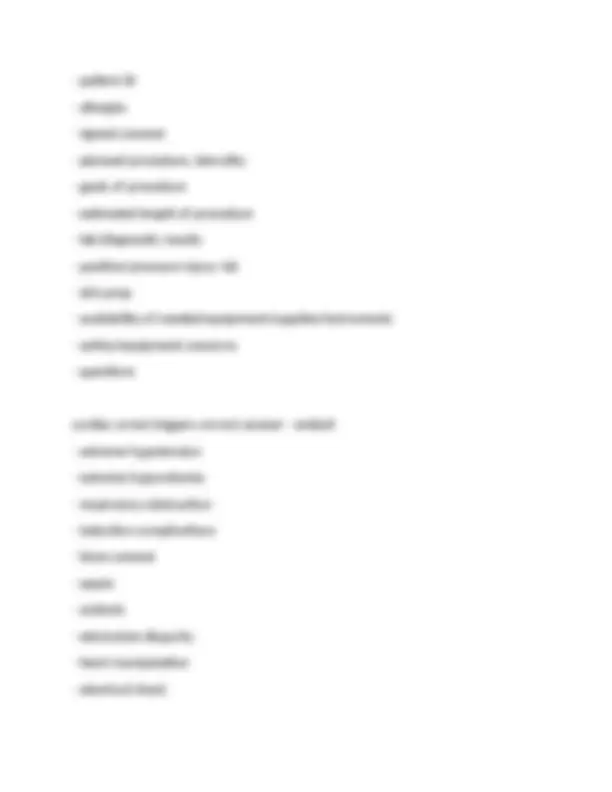
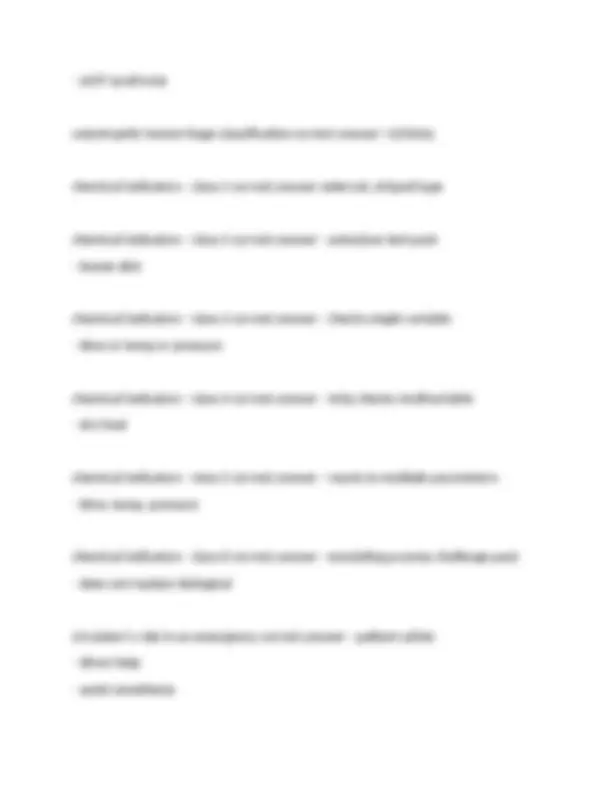
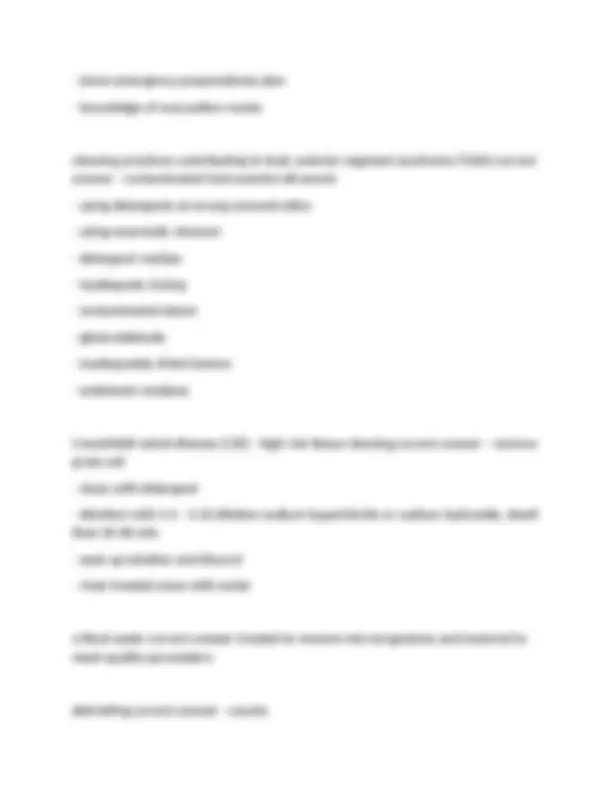
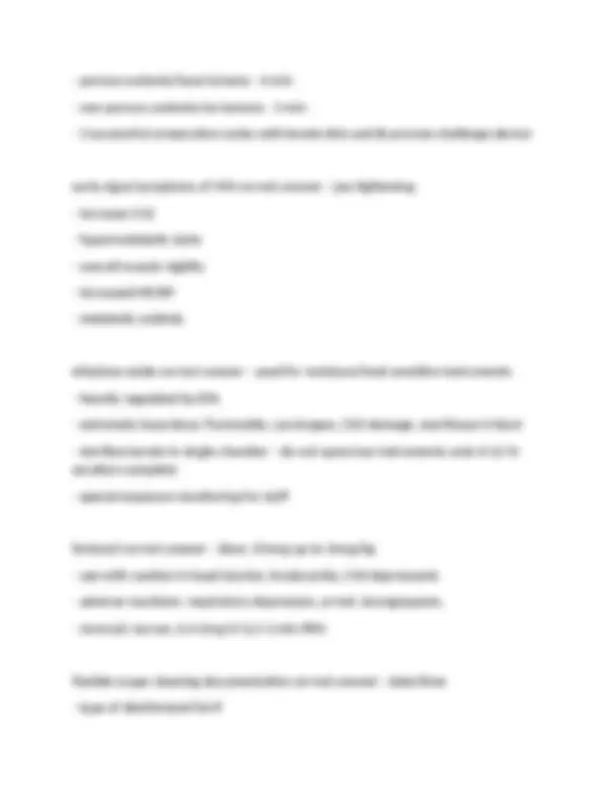
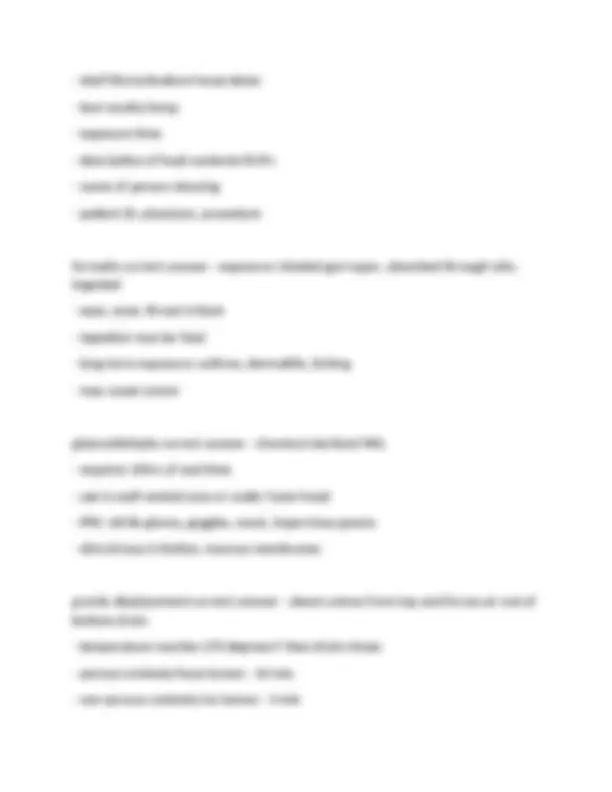

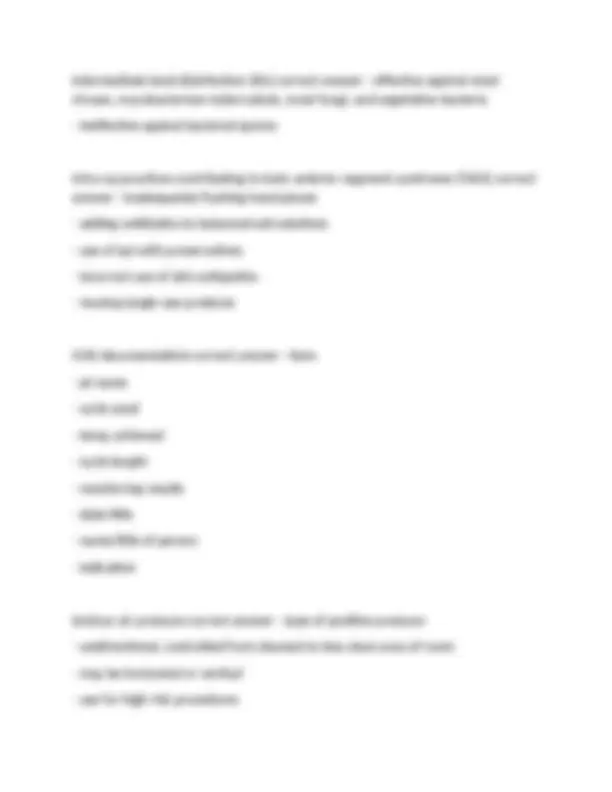
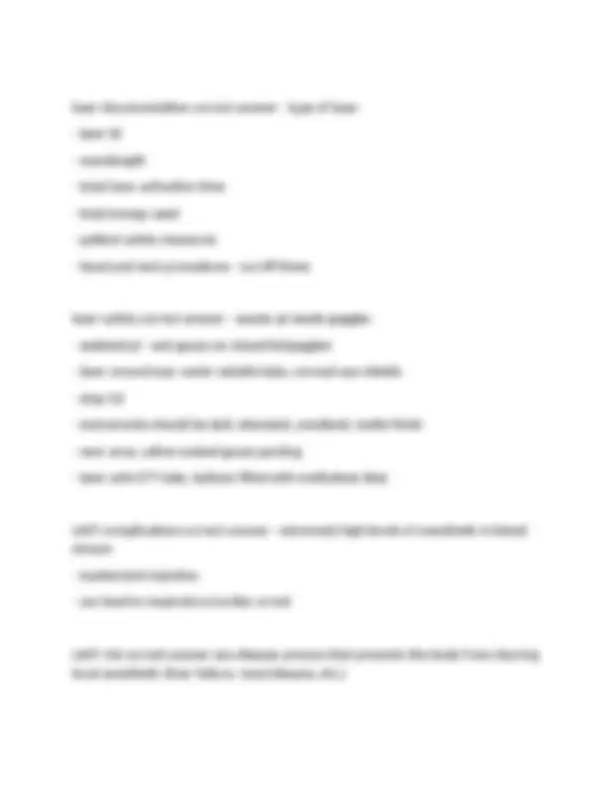
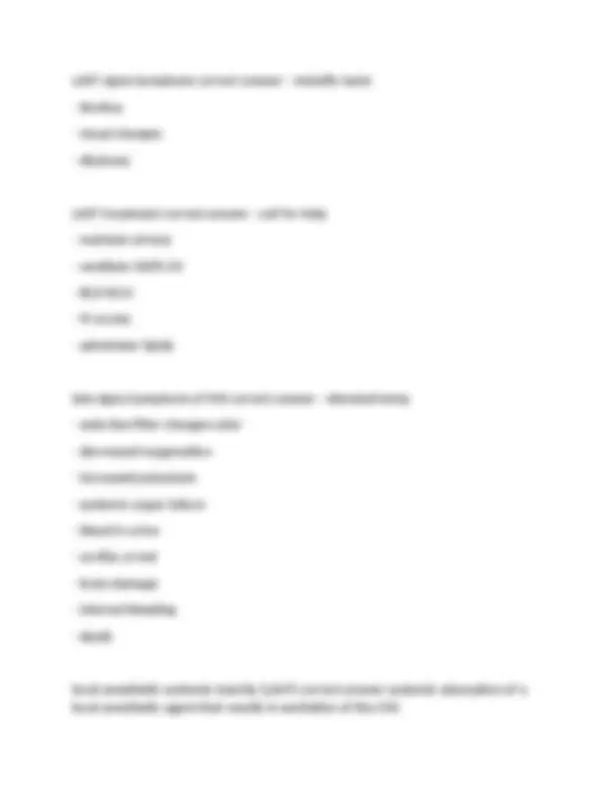
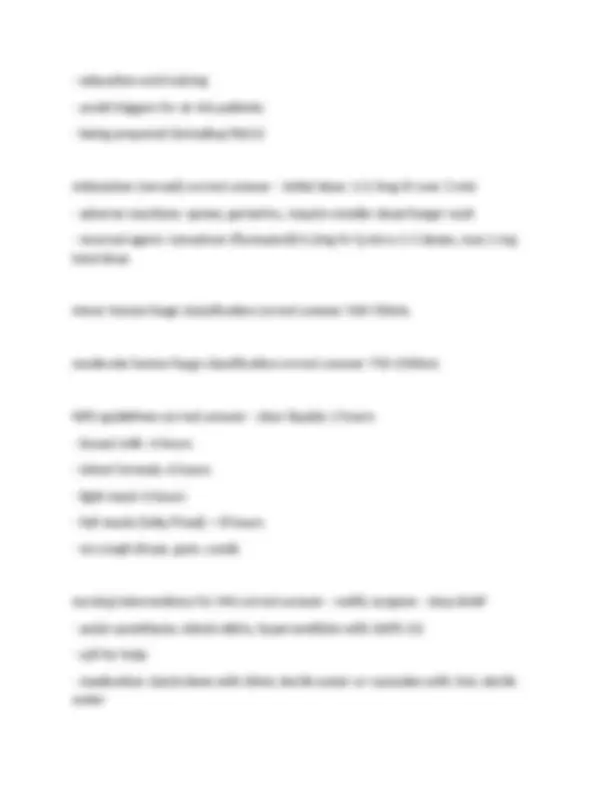
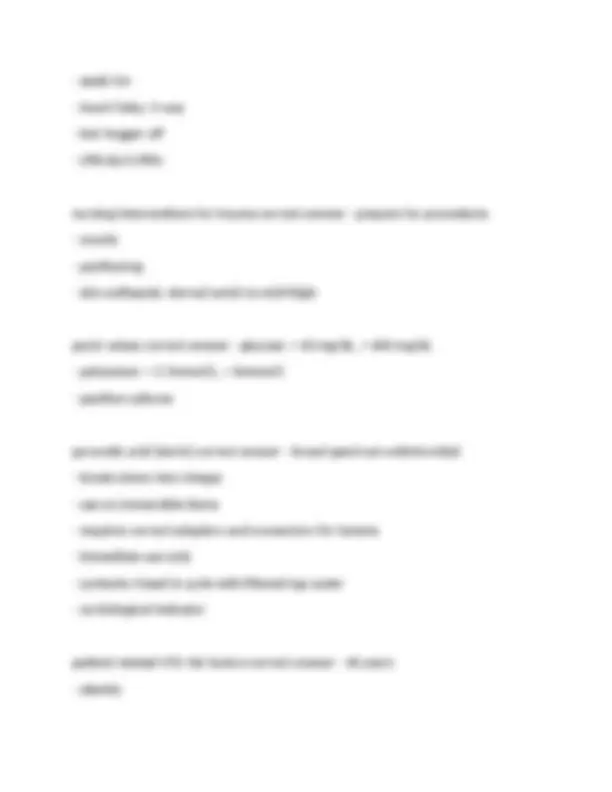
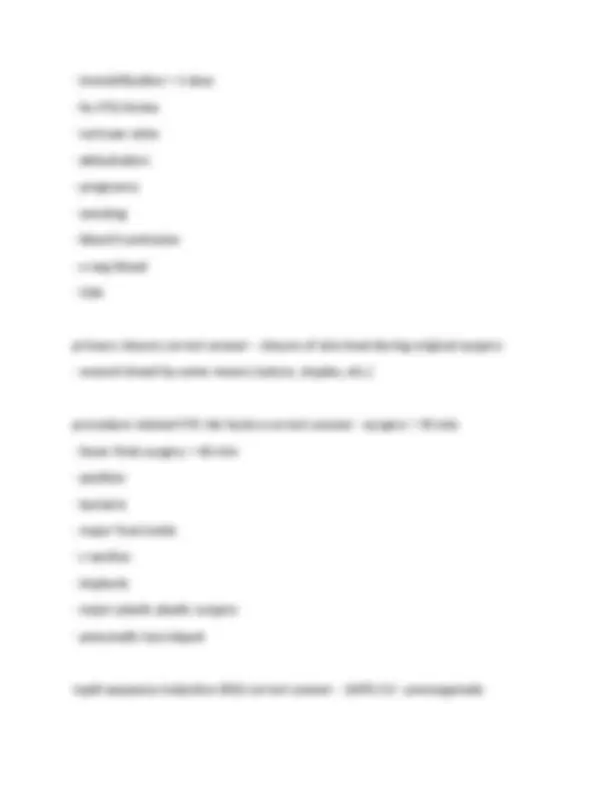
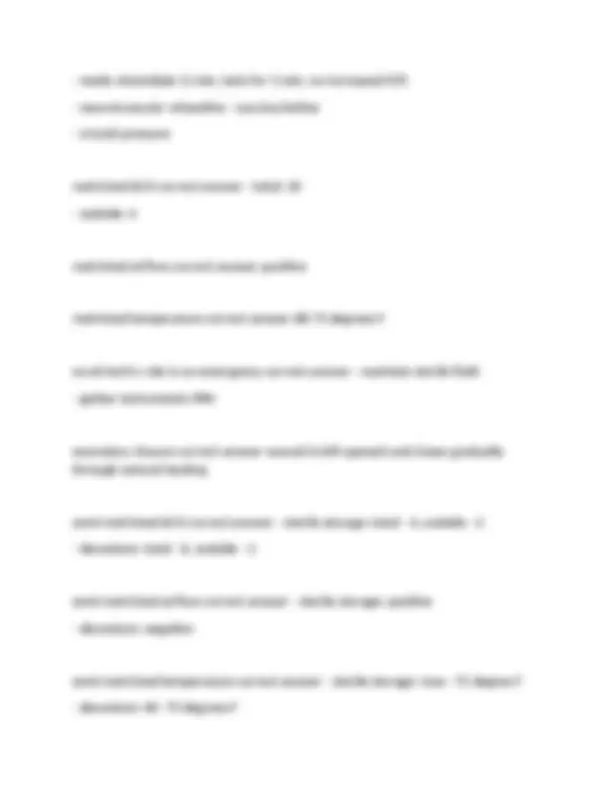
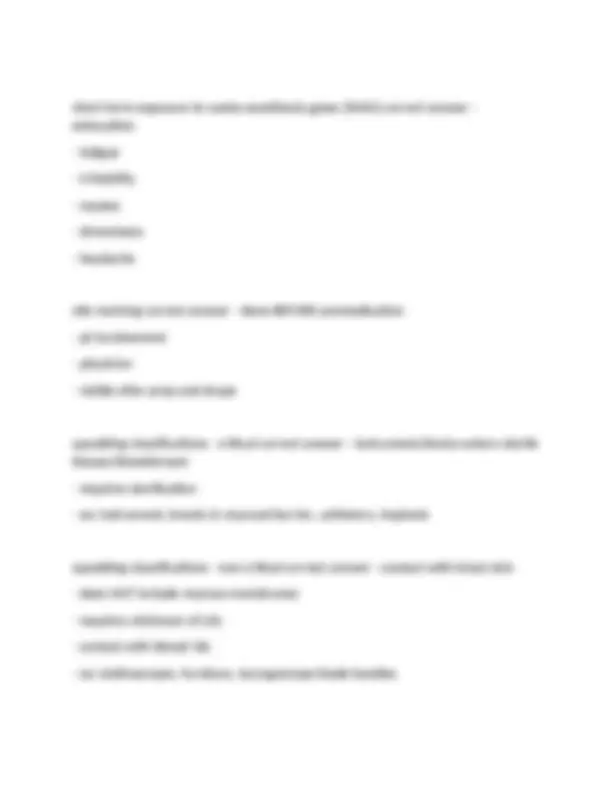
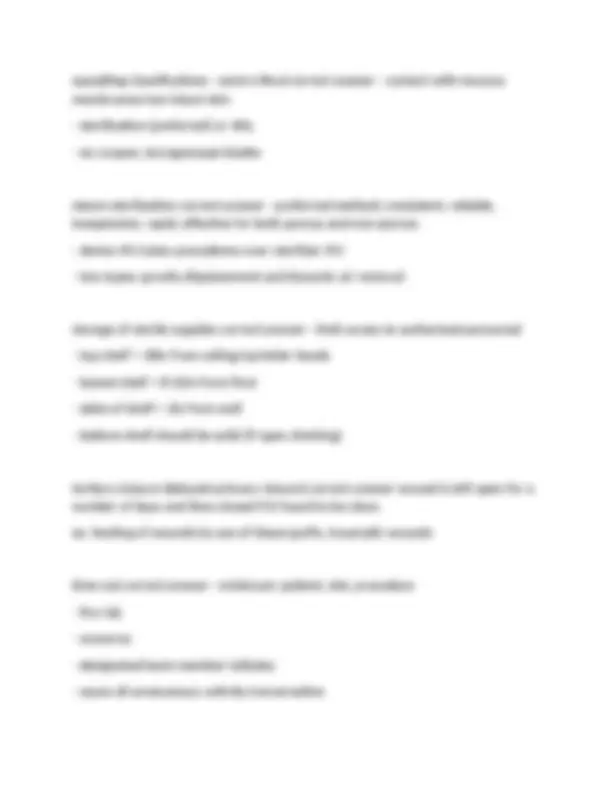
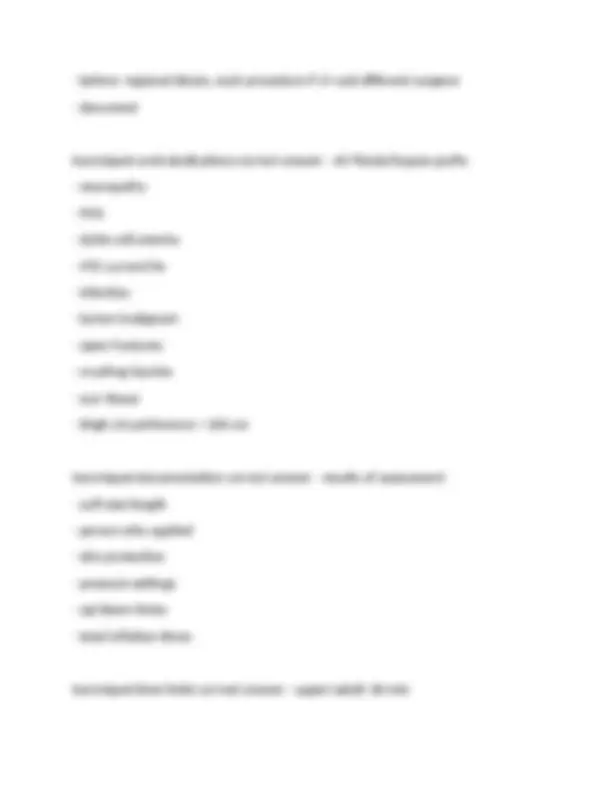
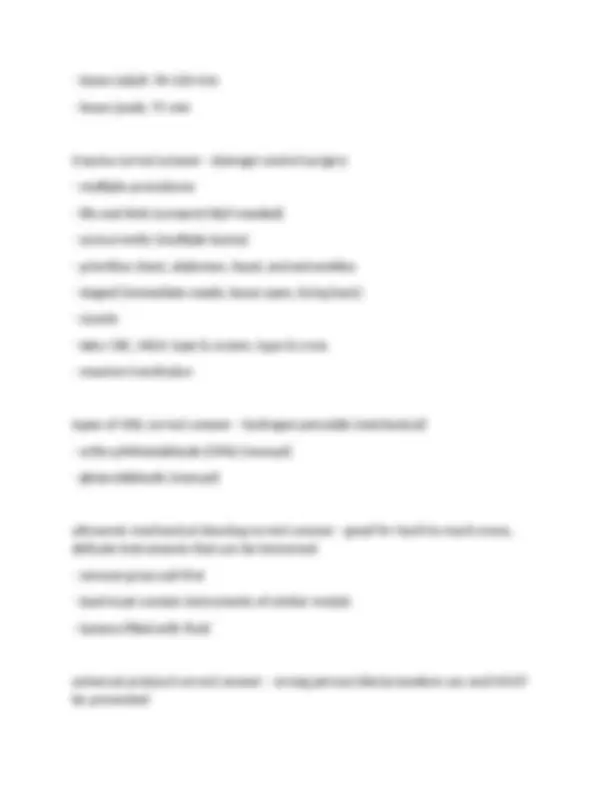
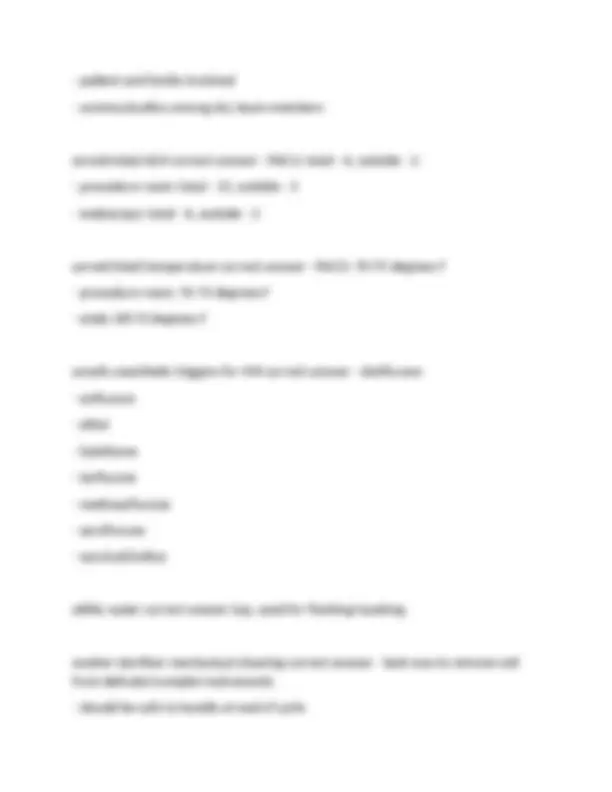
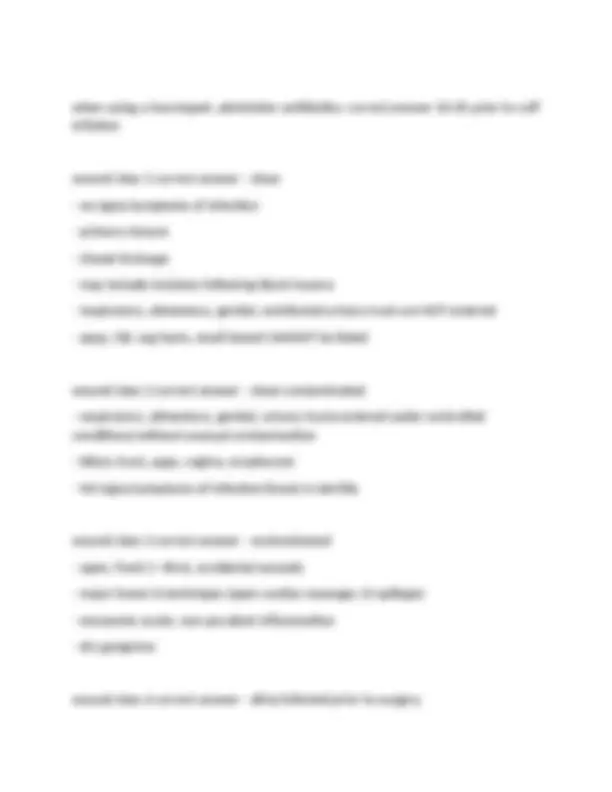



Study with the several resources on Docsity

Earn points by helping other students or get them with a premium plan


Prepare for your exams
Study with the several resources on Docsity

Earn points to download
Earn points by helping other students or get them with a premium plan
Community
Ask the community for help and clear up your study doubts
Discover the best universities in your country according to Docsity users
Free resources
Download our free guides on studying techniques, anxiety management strategies, and thesis advice from Docsity tutors
CFPN Exam Questions with Accurate Answers
Typology: Exams
1 / 28

This page cannot be seen from the preview
Don't miss anything!





















air changes/hour (ACH) correct answer - # of times air is replaced
high level disinfection (HDL) correct answer - effective against hep B/C and HIV
intermediate level disinfection (IDL) correct answer - effective against most viruses, mycobacterium tuberculosis, most fungi, and vegetative bacteria
laser documentation correct answer - type of laser
long-term exposure to waste anesthesia gases (WAG) correct answer - spontaneous abortion
malignant hyperthermia (MH) correct answer biochemical chain reaction response, triggered by common general anesthetics and paralyzing agent succinylcholine, within skeletal muscles of susceptible individuals manual cleaning correct answer - reserved for instruments that cannot withstand mechanical